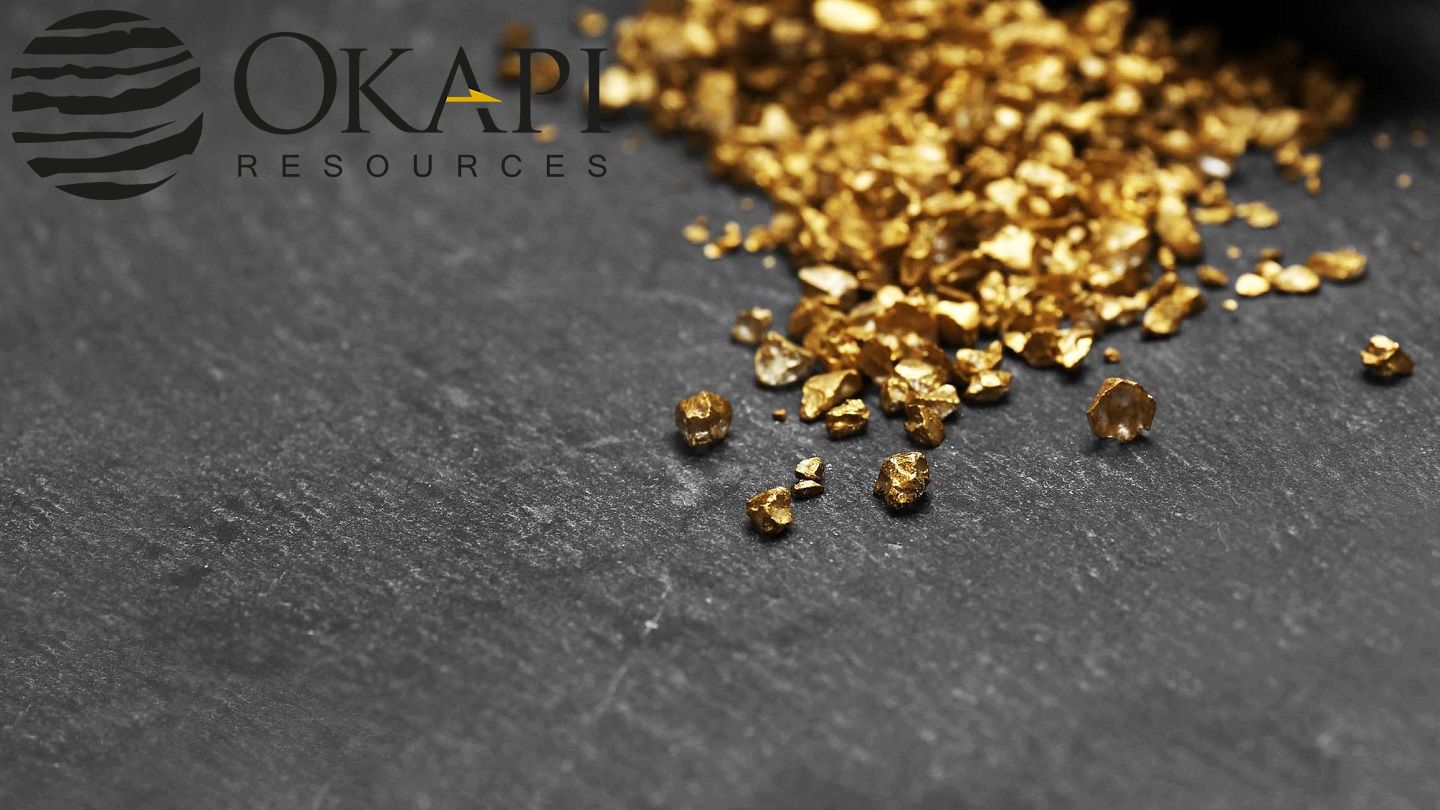
Transformational Acquisition of High Grade Uranium Assets
Perth, July 12, 2021 AEST (ABN Newswire) - Okapi Resources Limited ( ASX:OKR) (
ASX:OKR) ( 26O:FRA) is pleased to advise it has entered into a binding agreement (Acquisition Agreement) to acquire 100% of the shares and options in Tallahassee Resources Pty Ltd (Tallahassee). The key terms and conditions of the Acquisition Agreement are set out below.
26O:FRA) is pleased to advise it has entered into a binding agreement (Acquisition Agreement) to acquire 100% of the shares and options in Tallahassee Resources Pty Ltd (Tallahassee). The key terms and conditions of the Acquisition Agreement are set out below.
Tallahassee holds a 100% interest in mineral rights that cover approximately 7,500 acres in the Tallahassee Creek Uranium District of Colorado, USA (Tallahassee Uranium Project) together with an option to acquire 100% of the Rattler Uranium Project, including the historical high-grade Rattlesnake open pit mine, in north-eastern Utah (Rattler Uranium Project).
Okapi's Executive Director, Mr David Nour said, "This is a transformational opportunity for Okapi to become one of the most prominent uranium developers in the world. Through this acquisition, Okapi is perfectly placed to capitalise on the strengthening uranium market. On behalf of the Board, I welcome Ben and the Tallahassee team."
RATIONALE FOR THE ACQUISITION
The acquisition of Tallahassee provides Okapi immediate leverage to several large, high-grade North American uranium projects, together with direct access to a team who has in-depth knowledge of, and experience operating in, the North American uranium sector. Okapi's strategy is to capitalise on the bullish outlook for the industry, by rapidly building a North American uranium play via (i) accretive acquisitions; and (ii) successful exploration, in order to become a new leader in North American carbon-free nuclear energy.
The acquisition of Tallahassee represents the foundation on which to implement this strategy.
Electrification of the global economy: Major forecasters expect electricity demand will grow an incremental 55% by 2035 as electric vehicle penetration continues to accelerate. Electric car registrations increased by 41% in 2020 with 10 million electric cars on the world's roads at the end of 2020. As electricity demand increases, so does the need for reliable, emission-free base load power. Electricity generation is the largest and fastest growing contributor to global carbon dioxide (CO2) emissions. Nuclear power is one of the few energy sources capable of delivering base load carbon-free energy around the clock and currently accounts for 55% of carbon-free electricity in the United States (source: nei.org).
US President Joe Biden embraces domestic nuclear industry to achieve net-zero emissions by 2050: In 2020, approximately 60% of US utility-scale electricity generation was produced from fossil fuels (coal, natural gas, and petroleum), 20% from nuclear energy and 20% from renewable energy sources (source: eia.gov). The ruling United States Democrat Party recently announced its support of nuclear energy for the first time in almost 50 years. This is part of the Democratic Party's "technology neutral" approach to reduce reliance on fossil fuels, with nuclear energy to play a key role in the provision of green baseload power as part of electrification and decarbonisation of the U.S economy.
US Government to establish a national, strategic uranium reserve: Owners and operators of US nuclear power reactors purchased the equivalent of approximately 48 million pounds of uranium in 2019 with less than 12% purchased from domestic sources while a combined total of 42% was purchased from Russia (15%) Kazakhstan (18%) and Uzbekistan (9%) (source: eia.gov). In late 2020, the US Senate Committee on Environment and Public Works approved, with bipartisan support, a bill that advances a federal initiative to establish a national, strategic uranium reserve.
Non-OECD demand growth: Non-OECD demand growth is expected to continue significantly, led by China. In October 2018 China's NDRC Energy Research Institute said that China's nuclear generating capacity must increase ten-fold to 554 GWe (currently ~50 GWe) by 2050 if the country is to play its part in limiting the global temperature rise to below 1.5 C. The share of nuclear power in China's energy mix would therefore need to increase from current levels of 4% to 28% over this period. 20% of all new nuclear reactors under construction globally are in China.
Global uranium supply and demand fundamentals continue to tighten: Global uranium supply is in deficit with supply and demand fundamentals continuing to tighten with a significant shortfall expected in the coming years (source: World Nuclear Association). Furthermore, United States utility contract coverage remains critically low as Kazatomprom and Cameco continue to exercise production discipline limiting short and mid-term production levels.
TALLAHASSEE URANIUM PROJECT, COLORADO, USA
Project Area
The Tallahassee Uranium Project is located in central Colorado, USA, approximately 140km southwest of Denver and 30km northwest of Canon City.
The Tallahassee Uranium Project currently comprises:
(i) Leases over two private properties (the Taylor and Boyer ranches) that provide a 100% interest in approximately 7,400 acres that encompass the Boyer, Noah and Northwest Taylor Uranium Deposits. The lease agreements provide Tallahassee the right to explore, mine and construct infrastructure on these lands; and
(ii) Eight federal lode mining claims that cover a portion of the High Park Uranium Deposit.
The total project area is approximately 7,500 acres (see Figure 1*).
History of the Tallahassee Creek Uranium District
Uranium mineralisation was first discovered in the Tallahassee Creek area in 1954.
Between 1954 and 1972 sixteen small open pit and underground mines operated, with total production of approximately 80,000 tonnes of ore at an average grade of 2,500ppm U3O8, for 435,000 pounds U3O8 (see Figure 2*).
Western Nuclear conducted the first systematic exploration in the district between 1962 and 1966, drilling 15 holes for 3,700m. Importantly they identified thick sequences of sandstone that were not evident at the surface or in the past producing mines.
In 1974 Cyprus Mines began acquiring land and exploring the district. In 1977 Cyprus discovered the Hansen Uranium Deposit, with a drill hole that intersected a 13 metre interval averaging 1,600ppm U3O8.
Cyprus continued to undertake broad-spaced drilling around the Hansen Deposit, discovering extensions of the uranium mineralisation in a paleochannel system that hosts what are now known to be the Northwest Taylor, Noah and Boyer Deposits (see Figure 2*).
But Cyprus focused predominantly on the development of the Hansen and adjacent Picnic Tree Deposits, where multiple feasibility studies were completed, culminating in the definition of reserves at the Hansen Deposit of 27 million pounds of U3O8 at a grade of 800ppm U3O8. By 1981 all permits had been obtained to develop the Hansen Deposit by way of an open pit mining operation. But mining never commenced because of a downturn in the global uranium industry.
Between 2007 and 2014 Black Range Minerals Limited consolidated ownership of mineral rights through the Tallahassee Creek Uranium District and completed multiple drilling programs. Black Range defined JORC 2012 compliant resources, within its landholdings, that totaled 90.4 million pounds of U3O8 at a grade of 600ppm U3O8 across multiple deposits.
More than 2,220 holes have been drilled in the district, for approximately 350,000 metres.
To view tables and figures, please visit:
https://abnnewswire.net/lnk/OYJ28U09
About Okapi Resources Limited
 Okapi Resources Limited (ASX:OKR) recently acquired a portfolio of advanced, high grade uranium assets located in the United States of America and in the Athabasca Basin, Canada.
Okapi Resources Limited (ASX:OKR) recently acquired a portfolio of advanced, high grade uranium assets located in the United States of America and in the Athabasca Basin, Canada.
Assets include a strategic position in one of the most prolific uranium districts in the USA - the Tallahassee Creek Uranium District in Colorado. The Tallahassee Uranium Project contains a JORC 2012 Mineral Resource estimate of 27.6 million pounds of U3O8 at a grade of 490ppm U3O8 with significant exploration upside. The greater Tallahassee Creek Uranium District hosts more than 100 million pounds of U3O8 with considerable opportunity to expand the existing resource base by acquiring additional complementary assets in the district.
The portfolio of assets also includes an option to acquire 100% of the high-grade Rattler Uranium Project in Utah, which includes the historical Rattlesnake open pit mine. The Rattler Uranium Project is located 85km from the White Mesa Uranium Mill, the only operating conventional uranium mill in the USA hence provides a near term, low-capital development opportunity.
In January 2022, Okapi acquired a portfolio of high-grade exploration assets in the world's premier uranium district, the Athabasca Basin. The Athabasca Basin is home to the world's largest and highest-grade uranium mines.
Okapi's clear strategy is to become a new leader in North American carbon-free nuclear energy by assembling a portfolio of high-quality uranium assets through accretive acquisitions and exploration.
| ||
|





